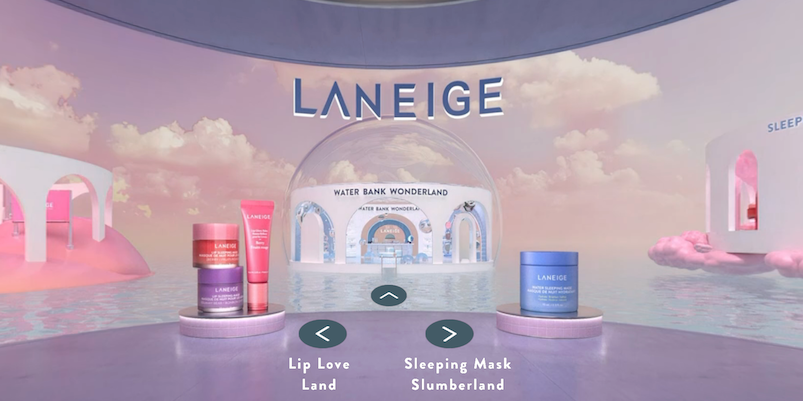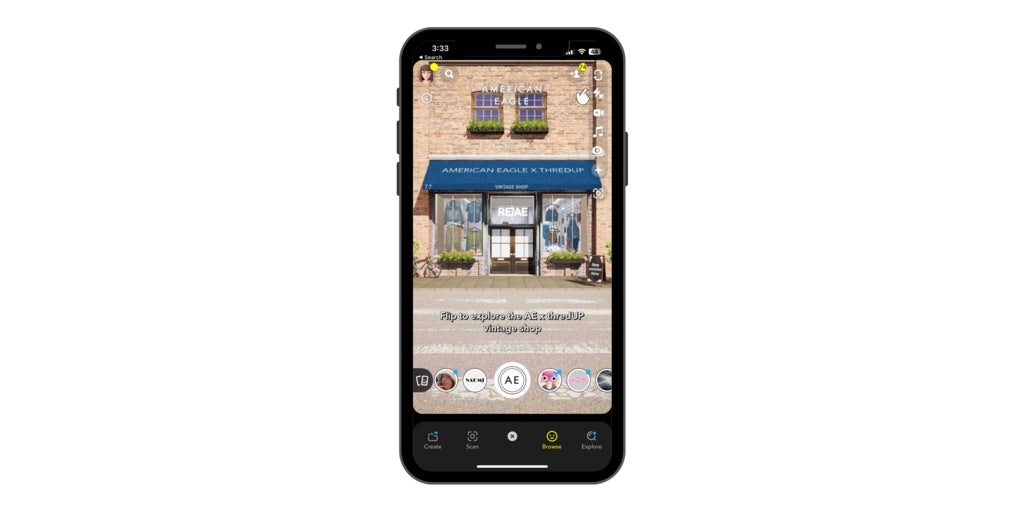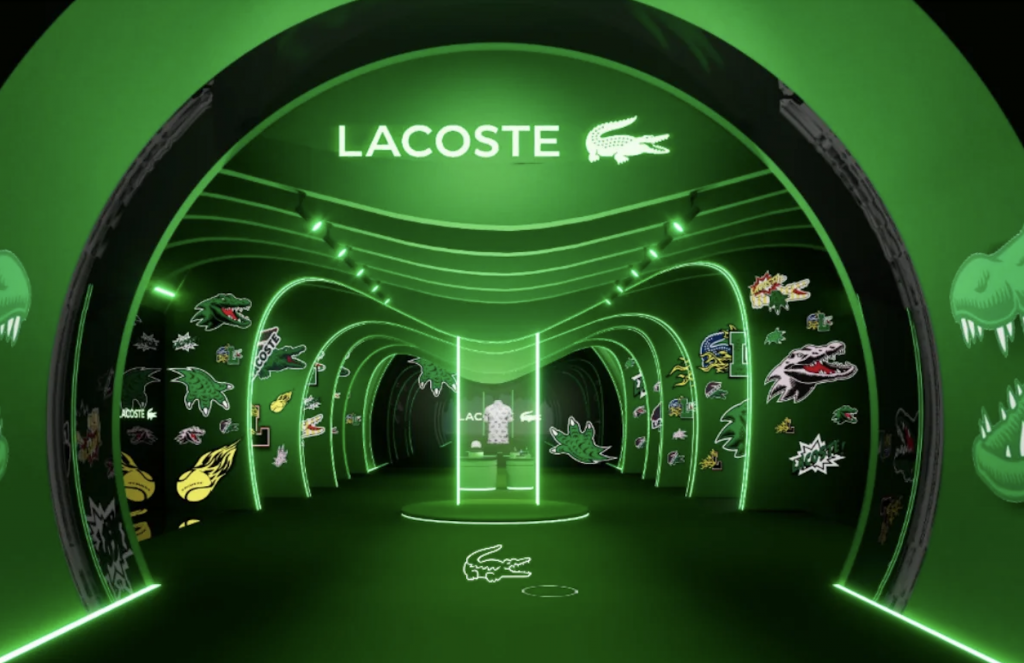What do Lacoste, Laneige, L’Occitane, and Lululemon all have in common (besides the obvious)? They’re all charting their own digital paths via three-dimensional, interactive virtual stores in the metaverse.
These retail activations aren’t designed to be like-for-like replicas of their offline counterparts. Instead, they usher in a new concept centered around storytelling, experience, experimentation, and community-building prospects.
“What we’ve seen is a maturing of demand for virtual worlds, following the earlier buzz, partially contributed to by the entrance of major technology players such as Meta, now followed by Apple,” Olga Dogadkina, co-founder and CEO of virtual store developer Emperia tells Jing Daily.

“The earlier marketing hype, which was campaign-dependent and short-lived has now become a permanent, long-term e-commerce solution treated as a ‘flagship virtual store,’ which is the case for most of our clients,” she adds.
According to Acxiom’s Beyond the Metaverse: CX Predictions for 2023 survey, immersive shopping is one of the major e-commerce trends shaping 2023.
Eighty percent of participating retailers predict that most e-commerce players will have their own immersive experiences within the next five years, while 76 percent of consumers who have used immersive shopping experiences want their favorite brands to create more.

E-commerce evolution#
As industries scope new online shopping approaches that align with the technological evolution, virtual stores are coming up trumps. A merger of the pleasure of physical retail atmospherics and the utility of e-commerce data-tracking, they’re a valid choice for brands wanting to broaden their omnichannel horizons.
The concept isn't new. But the trend proliferated in 2020, when foot traffic decreased and real-world shops shuttered because of the Covid-19 pandemic, forcing merchants to adapt to an online-only entity.
Early adopters, like Charlotte Tilbury and American Eagle, set the virtual store movement in action. In Tilbury’s case, this materialized in 2021 as a standalone online space with multiplayer modes, while the latter went big for the holiday season by tapping Snap’s augmented reality lens feature to develop three digital parlors.
According to Marketing Dive, on average, American Eagle’s shoppable activations generated around $2 million in revenue.
In 2023, even as physical retail bounces back, these experiences have found a place in the online shopping landscape.
With the global omnichannel retail solutions market size expected to reach $17.92 billion by 2030, according to Grand View Research, it's an open door that brands can’t afford to miss.

Strength in numbers#
Beyond its novelness, metacommerce is a savvy tool for gathering valuable data on a brand’s performance.
Insights from these virtual experiences can highlight what’s selling well, the dominant buyer demographic, the length of time shoppers spend in these arenas, and a consumers’ unique preferences.
In turn, brands can use these figures to tailor their offerings to individuals, as well as inform their own next steps in their roadmaps.
“Every interaction within our virtual experiences is tracked. From product clicks to game plays, to quiz answers and add to cart. Our platform provides a new source of 3D spatial and behavioral analytics, which allows brands to continuously optimize their virtual stores and other marketing materials using a new layer of first-party data,” Neha Singh, founder and CEO at virtual store developer Obsess tells Jing Daily.

Pathway to personalization#
From a consumer perspective, appeal lies beyond statistics. Three-dimensional retail is also ushering in a new era of personalized commerce.
Before the metaverse revolution, the e-commerce terrain relied on outdated, standardized architecture that struggled to meet skyrocketing consumer expectations.
New virtual interfaces offer an upgrade to digitally-driven retail. Customers can design and dress their own avatars, engage in unique gamified activities, socialize with other users, and receive product recommendations tailored to their preferences.
“Personalization lives at the core of virtual stores. Traditional e-commerce has used the same 2D grid-like interface for the past 25 plus years for all types of products,” Singh says. “In Obsess’ virtual stores, brands can display shoppers' names in a room that's merchandised with products specific to each shoppers' daily routine, as well as utilize virtual stores as a visualization tool for custom looks to give customers a more contextual, curated way to shop their products.”
Appetite and spending power are evident. Singh also says that Obsess’ partner brands have seen their virtual stores deliver up to 109 percent more average time spent on stores, 75 percent higher conversion rates, and a 10x increase in average order value, versus their traditional e-commerce sites.
Emperia’s platform has driven increased conversion rates for its brand partners by an average of 73 percent (versus regular e-commerce websites), with an average return on investment (ROI) of 750 percent, the company reports.

It takes two#
The trend’s potential expands beyond momentary hype. These spaces aren’t just gimmicks, they’re a launchpad for brands to build worlds that are meaningful and meant to last.
The technicalities behind these activations are often beyond more retailers’ capabilities. Subsequently, most are opting to join forces with industry hotshots like Obsess or Emperia to bring their visions to life.
“While there is no doubt that brands know their DNA and audience the best, virtual stores are a brand new breed of online retail, the scale of which they are yet to fully grasp. The complexity that goes into designing, building and operating a virtual store goes beyond its aesthetics and is a far cry from the conventional 2D website,” Dogadkina says.
Emperia’s platform covers both the initial build as well as the maintenance of virtual stores. While providing ongoing data reporting, retailers are handed full creative control over their virtual store, as well as the ability to continually optimize the performance of their virtual experiences.
Meanwhile, Obsess launched its ‘Ava’ content management system feature earlier this year, which allows retailers to flesh out nascent concepts into full fledged universes – without the need for expansive coding knowledge.
The subscription-based software means brands can seamlessly integrate functions such as merchandising, new product lines, gamified features, and avatars to elevate experiential moments.

Marketing’s revamp#
Virtual storefronts can also be an effective marketing tool for putting new product releases on a consumer’s radar. For example, this month Lululemon harnessed the trend’s cultural clout to publicize its ‘Chargefeel 2’ sneaker drop.
“While Lululemon’s Chargefeel 2 virtual experience was launched in conjunction with a larger campaign, celebrating the release of the new shoe, the experience itself very much reflects the brand and its values as a whole,” Dogadkina says. “Immersing the visitor in the brand story and providing an added value that goes beyond the conventional transactional nature of e-commerce results in a higher user return rate, increased brand loyalty and ultimately increased online sales, whether the campaign is short or long term.”
They also enable brands to expand into new arenas. American Eagle used its reputation as an early proponent in the meta-retail space to take a risk when it launched its AR-powered resale experience in April this year.
Jumping off the back of its debut success via Snap, the label launched its RE/AE service, in which users could browse up to 200 American Eagle items from the 1980s to the 2000s using the app’s lens filters. The activation facilitated accessible resale opportunities, and demonstrated the influence of tech-enabled shopping.
As brands move away from one-dimensional entities to going all-in with fully-fledged universes, virtual retail destinations are an entry point to drive consumers to Web3-based experiences.

